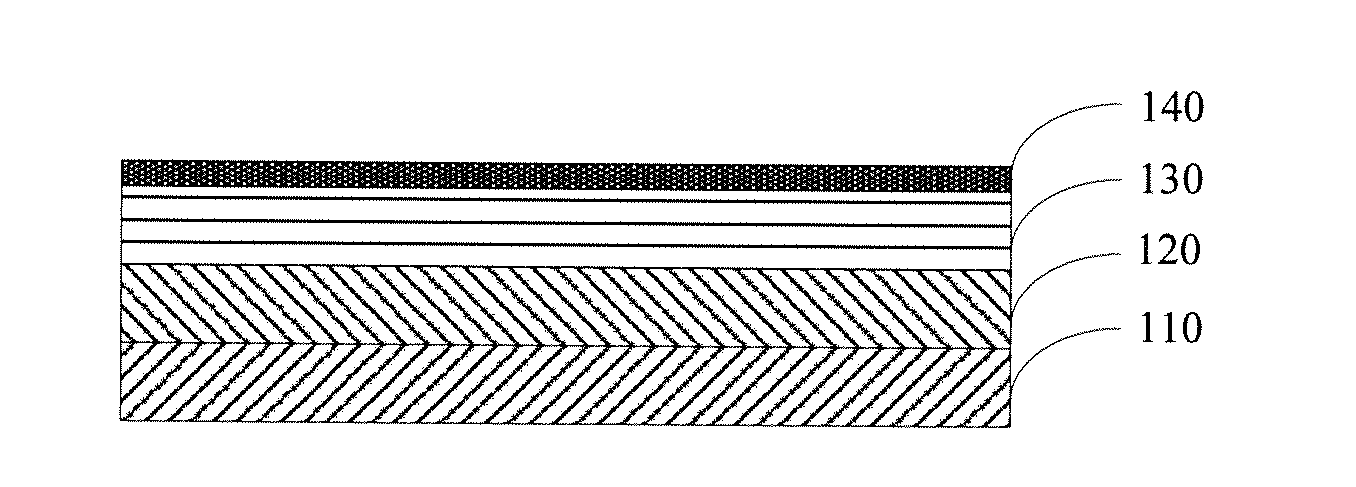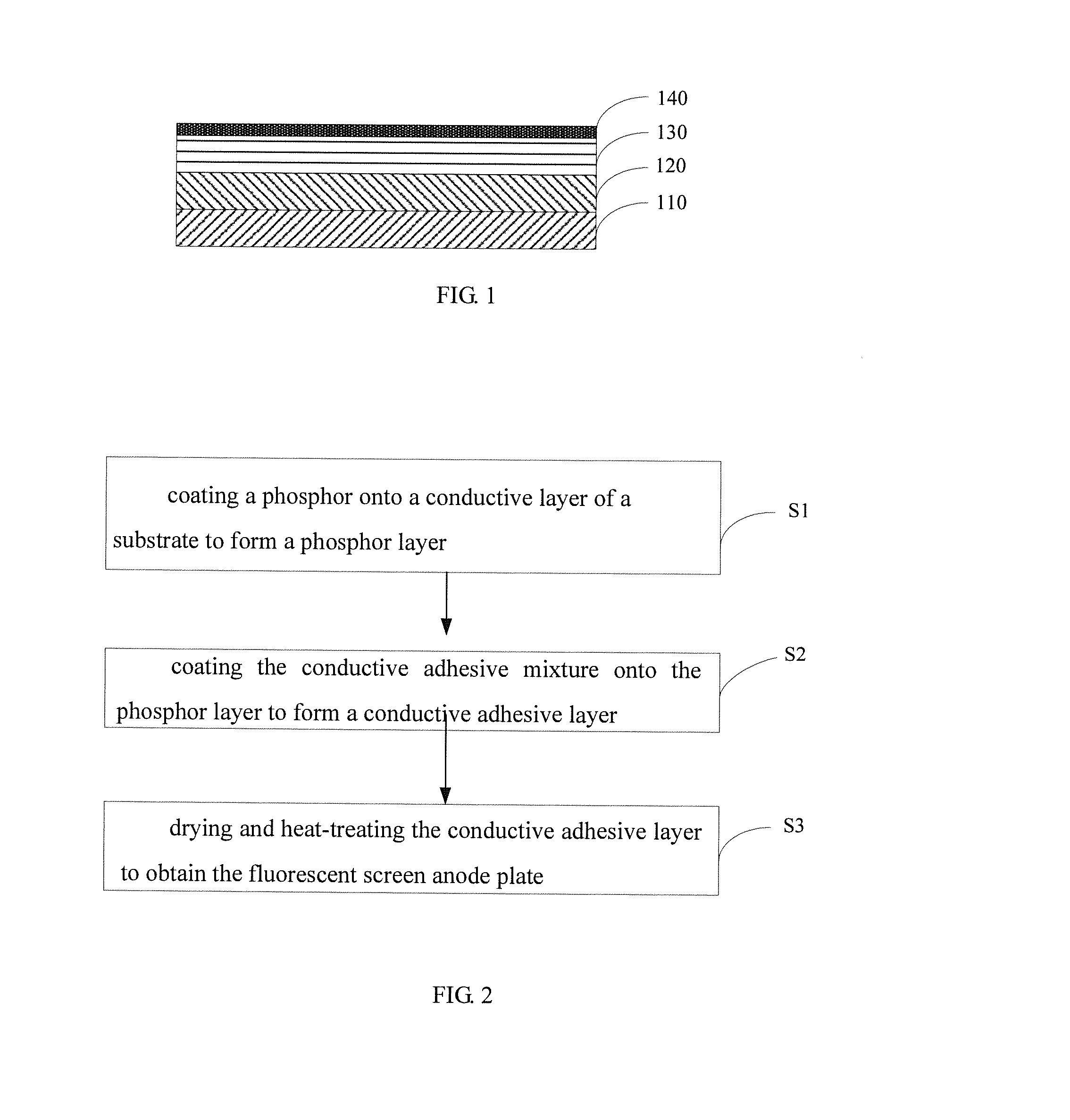Conductive adhesive mixture, fluorescent screen anode plate and the manufacturing methods thereof
- Summary
- Abstract
- Description
- Claims
- Application Information
AI Technical Summary
Benefits of technology
Problems solved by technology
Method used
Image
Examples
example 1
[0036]Preparation of the conductive adhesive mixture: 28 g of SnCl4, 70 g of potassium silicate, 700 ml of ionized water, and 2 g of Sn nanoparticles were mixed together, and then the mixture was subjected to ultrasonic waves for 30 minutes to produce the conductive adhesive mixture.
[0037]An ITO glass was cut according to a predetermined size, and then washed with acetone, alcohol and deionized water, respectively. After the ITO glass was dried, a yttrium terbium silicate green phosphor was deposited onto an ITO surface of the ITO glass to form a phosphor layer, and then the ITO glass was heat-treated at 450° C. for 30 minutes. Finally, a conductive adhesive was coated onto the surface of the phosphor layer by the spincoating process and dried at a low temperature of 45° C., and the conductive adhesive was heat treated at 120° C. for 5 hours to obtain the fluorescent screen anode plate. The conductive adhesive layer therein had a thickness of about 0.1
example 2
[0038]Preparation of the conductive adhesive mixture: 4.5 g of InCl3 solution, 95 g of sodium silicate, 600 ml of ionized water, and 0.5 g of In nanoparticles were mixed together, and then the mixture was subjected to ultrasonic waves for 30 minutes to produce the conductive adhesive mixture.
[0039]An ITO glass was cut according to a predetermined size, and then washed with acetone, alcohol and deionized water, respectively. After the ITO glass is dried, an yttrium europium oxide red phosphor was deposited onto an ITO surface of the ITO glass to form a phosphor layer, and then the ITO glass was heat-treated at 450° C. for 1 hour. Finally, a conductive adhesive was coated onto the surface of the phosphor layer by the infiltration process and dried at a low temperature of 50° C., and the conductive adhesive was heat treated at 150° C. for 2 hours to obtain the fluorescent screen anode plate. The conductive adhesive layer therein had a thickness of about 2 μm.
example 3
[0040]Preparation of the conductive adhesive mixture: 28 g of SbCl3, 72 g of poly(silicon dioxide), and 350 ml of deionized water were mixed together, and then the mixture was subjected to ultrasonic waves for 30 minutes to produce the conductive adhesive mixture.
[0041]An ITO glass was cut according to a predetermined size, and then washed with acetone, alcohol and deionized water, respectively. After the ITO glass was dried, an yttrium europium oxide red phosphor was deposited onto an ITO surface of the ITO glass to form a phosphor layer, and then the ITO glass was heat-treated at 450° C. for 2 hours. Finally, a conductive adhesive was coated onto the surface of the phosphor layer by the spincoating process and dried at a low temperature of 50° C., and the conductive adhesive was heat treated at 130° C. for 5 hours to obtain the fluorescent screen anode plate. The conductive adhesive layer therein had a thickness of about 1 μm.
PUM
| Property | Measurement | Unit |
|---|---|---|
| Temperature | aaaaa | aaaaa |
| Temperature | aaaaa | aaaaa |
| Temperature | aaaaa | aaaaa |
Abstract
Description
Claims
Application Information
 Login to View More
Login to View More - R&D
- Intellectual Property
- Life Sciences
- Materials
- Tech Scout
- Unparalleled Data Quality
- Higher Quality Content
- 60% Fewer Hallucinations
Browse by: Latest US Patents, China's latest patents, Technical Efficacy Thesaurus, Application Domain, Technology Topic, Popular Technical Reports.
© 2025 PatSnap. All rights reserved.Legal|Privacy policy|Modern Slavery Act Transparency Statement|Sitemap|About US| Contact US: help@patsnap.com


